
Following our weekend in Warsaw, we made our way by train to Fredek and Ela's country place in Maćkowa Ruda, near Suwałki. From there, at 7 a.m. the following morning, we joined a local tour group for a ride to Vilnius, about four hours to the east in Lithuania. Sejny, July 5, 2005.

Our host in Vilnius was Ola, a friend of Fredek and Ela's. The day of our arrival she was working at the Vilna Gaon Jewish State Museum's Tolerance Centre.

"Narrow cobblestone streets and an orgy of Baroque: almost like a Jesuit city somwhere in the middle of Latin America," wrote Nobel laureate Czeslaw Milosz.

No. 9, Žemaitijos street, in the old Jewish quarter, once housed the Prima nafta and salt store. The sign here is in Polish and Hebrew. Vilnius, July 5, 2005.
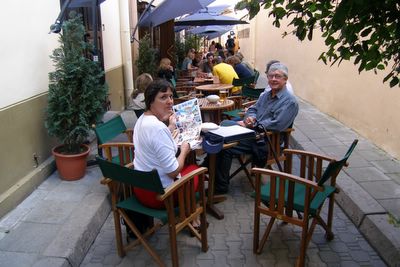
Antokolskio street in the old Jewish Ghetto is so narrow that this restaurant table barely fit in it.
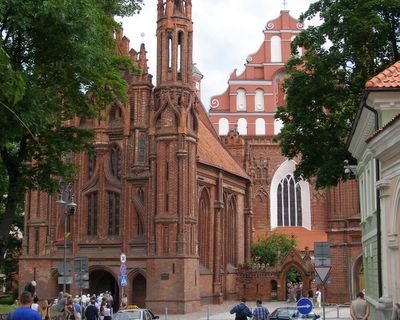
Vilnius is a city of churches. This is probably the most famous, the Church of St. Anne, a flamboyant baroque masterpiece by Benedikt Rejt, ca. 1500. Legend has it that Napoleon was so delighted at the sight of it that he wanted to take it back to Paris with him.
To the right is the Bernardine Church, which was full of jolly monks haming it up for the turystki.

Belfry of the Church of St. John, part of the university. Like most of the churches in Vilnius, it was closed and severely damaged during the Soviet occupation.
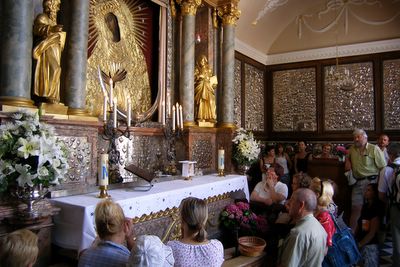
Ostra Brama in Polish, Aštros Vartai in Lithuanian, the Gate of Dawn is the site of one of the most revered shrines in all of Eastern Europe. The Madonna here has been worshipped by Poles and Lithuanians alike since 1671.
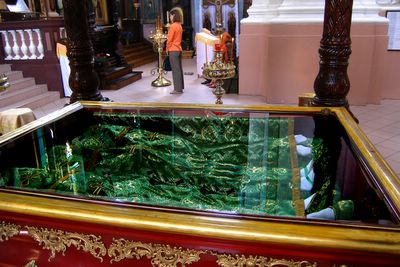
Just next door is the Russian Orthodox Church of the Holy Spirit. Its centrepiece is a glass case containing the remains of three Orthodox saints, the holy martyrs Anthony, Ivan and Eustatius.
They were noblemen who served Duke Algirdas. Anthony and Ivan converted to Christianity, thereby angering the pagan priests. The Duke had them hanged on an oak tree, but this backfired and inspired the people. Then Eustatius converted to Christianity, for which he was brutally tortured. His legs were smashed with hammers, and as he was dying he thanked God for his suffering. This prompted the Duke to speed things up, and he had the last brother hanged too. The result was mass conversions, including eventually that of the Duke himself, who ended his days as a monk. When their bodies were later found to be uncorrupted, the three martyrs were declared saints, around 1378.
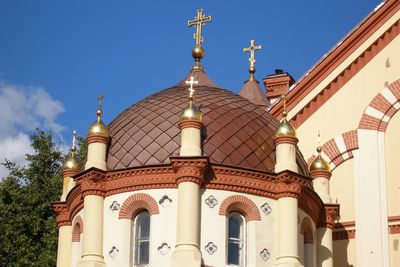
Russian Orthodox Church of St. Michael, orig. 1514, reconstructed in the Russian Byzantine style in 1865 by order of Governor General Mikhail "the Hangman" Muravyov.
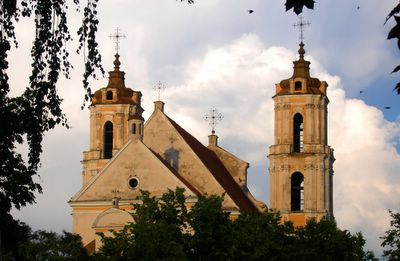
Church of St. Jacob and St. Philip, late 17th C. The Soviets had plans to demolish it, but perhaps through neglect, incompetence or laziness, they never got around to it.
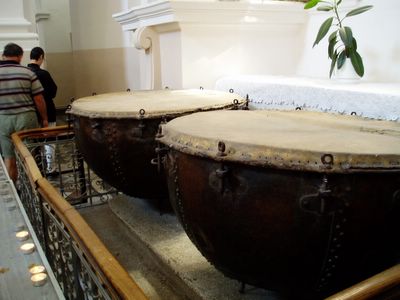
"The trumpets, kettledrums and war horns in all the Cossack camps and tchernya encampments filled the air with their raucous blaring from the day's first light, while the great holy drum of the Tartars, known as the 'Bhalt,' boomed like thunder well into the sunset." Henryk Sienkiewicz, With Fire and Sword.
Tartar drums in the Church of SS Peter and Paul.
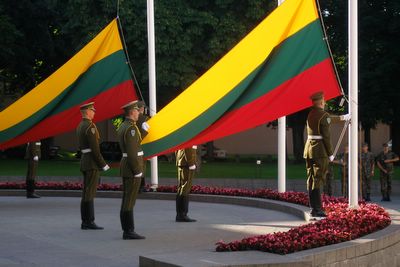
July 5th, dress rehearsal at the Presidential Palace for Lithuanian Statehood Day.
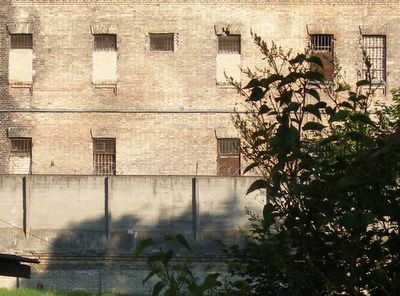
Ola's place on Savickio street is practically next door to the old tsarist Lukiškių Prison. Apparently Józef Piłsudski was once an inmate there. Coincidentally, Ola's house was once the residence of Józef's brother Adam Piłsudski. Stranger still, years later is was the home of Professor Leon Brodowski, father of Maciej, a friend of mine many years ago in Ottawa.

Józef Piłsudski is buried in a crypt in Wawel Castle in Kraków, but his heart lies here in his mother's grave in Rasų Cemetery. Vilnius, July 6, 2005.

Painting by one of Ola's artist friends.
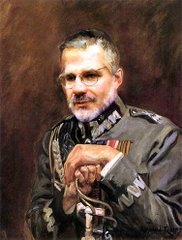

No comments:
Post a Comment